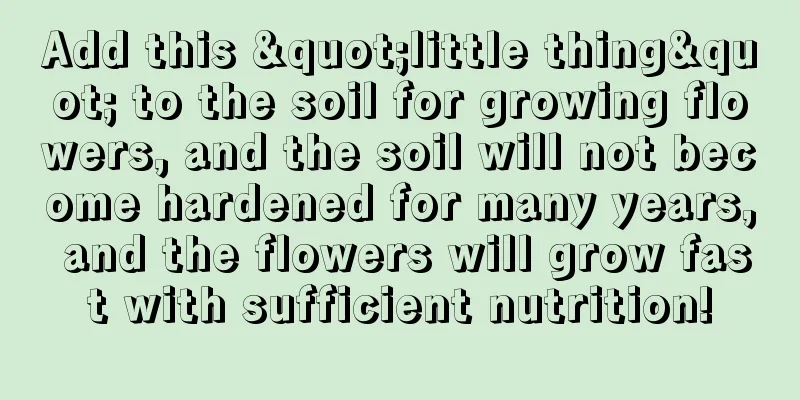How does Calceolaria survive the winter?

1. TemperatureCalceolaria prefers a cool climate and cannot withstand high temperatures. The daytime temperature of the seedlings needs to be controlled at around 20 degrees and not exceed 20 degrees, and the night temperature needs to be controlled at around 10 degrees. For potted cattails in winter, the temperature must be stable at least between 7 and 10 degrees and cannot be lower than 3 degrees. Otherwise, it will freeze and even die from boiling in severe cases. When the temperature is extremely low in winter, it needs to be placed in an air-conditioned room to control the temperature, but be careful not to let the temperature fluctuate, otherwise it will not be conducive to its growth. 2. SoilCalceolaria likes fertile, loose, slightly acidic sandy soil. The same must also be done when choosing the soil in winter. In addition, the soil must have good drainage. Otherwise, water will accumulate in the flowerpot during winter, which can easily cause freezing of the Calceolaria or cause root rot due to accumulated water. 3. LightingCalceolaria is a plant that likes light. It needs long daylight, more than 14 hours of sunshine to germinate and bloom. In winter, it must be ensured that it has sufficient sunshine. When the weather is fine and the temperature is not very low, it can be placed outdoors in full sunlight. However, when the temperature is too low, it can be placed in a well-lit place on the balcony to allow it to receive sunlight through the glass. When it is cloudy for consecutive days and there is no sun, it is necessary to use lights to supplement the sunlight for it, otherwise the lack of light will be very detrimental to its normal growth and development. 4. WaterCalceolaria is quite sensitive to water. Even in the winter when the temperature is low, it needs an appropriate amount of water to provide it with the necessary water for growth. However, the watering time should generally be chosen at noon on a sunny day, and the water temperature should also be controlled. It should generally be equivalent to the air temperature. This can effectively prevent the Calceolaria from being frozen. When watering, pay attention to the fact that as long as the soil is moist, it will be fine. Do not water it in large quantities, otherwise the soil will accumulate water and its roots will rot. In addition, when watering, do not water its leaves, otherwise the leaves will easily rot. The above is how to let Calceolaria survive the winter. I wish all the Calceolaria grown by all flower lovers can survive the winter safely! |
<<: Does Calceolaria bloom in winter?
>>: How to grow white crystal chrysanthemum so that it will bloom
Recommend
Simple operation, multiple methods to propagate pearl spider plants, and they can survive in just a few steps!
Cuttings Choice of soil: The choice of culture so...
How often should Brazilian trees be watered in summer?
Watering frequency of Brazilian wood in summer Th...
How to root Araucaria
Araucaria root cuttings: selection of root spikes...
How to propagate poplars and what to pay attention to
Poplar propagation method Poplars can be propagat...
How to prune potted grapes
Pruning time for potted grapes It is generally mo...
The efficacy and function of money grass
Treating stones Moneywort can be used to treat st...
Choose these 5 kinds of porridge when making porridge in autumn. They are good for beauty and detoxification. A must-have for elderly people at home!
Lotus seeds: clear the heart and relieve internal...
What is the reason why succulent leaves turn yellow and fall off?
Succulents have unique shapes and colors, and the...
How to care for camellia leaves so that they grow bigger
1. Suitable soil Suitable soil is the basis of gr...
Disease and Pest Control of Viburnum
1. Peak growing season Although the magnolia is n...
When is sorghum planted?
There are many kinds of grain crops in China. Per...
How to care for peonies after they bloom during the Spring Festival (cultivation and management of peonies after they bloom)
1. Cut off the dead flowers in time after the peo...
Can the sedge tree be hydroponically cultivated? Hydroponics cultivation method
Can the Bamboo Tree be hydroponically cultivated?...
How to Behead the Yajuan Silk
1. Prepare tools Before beheading, you must prepa...
How to raise a rich child
1. Breeding environment 1. Soil: To grow the luck...









